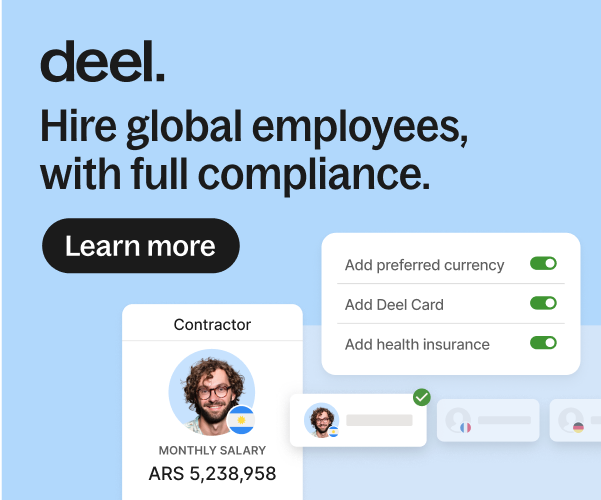Navigating mergers and acquisitions, securing funding, or engaging in other significant transactions requires meticulous preparation and organization in today’s fast-paced global business environment. A cornerstone of this preparation is the establishment of a well-structured data room. This virtual repository serves as the central hub for all critical company information, providing potential investors and acquirers with the necessary insights to evaluate a business, assess potential risks, and ultimately, make informed decisions. Ongoing realignment of geoeconomic models and major shifts within US trade and tariff policy suggest near-term uncertainty for businesses worldwide. However, any global economic weakness likely will create opportunities for domestic and cross-border M&A to support building strategic partnerships to enter new markets.
This article delves into the essential elements of building an effective data room structure, with a particular focus on the nuances between pre-seed and seed funding stages. We’ll explore the critical role of secure document sharing in accelerating transaction timelines and highlight how platforms like OrangeDox can empower startups and SMEs to manage this crucial process with efficiency and security. A properly constructed data room is more than just a collection of documents; it’s a powerful tool that can significantly impact the success of your business transactions. Be sure to follow us on LinkedIn and Reddit. Now let’s jump into it!
Disclosure: At ClearSky 2100 Ventures, our Growth Partner Network partly consists of affiliate partnerships. We may earn a small commission from buying links on our site at no cost to you.
The 2025 Global M&A Landscape Rapidly Evolving
In 2024, the value of M&A deals exceeded USD 2.2 trillion, up 9% from 2023. Deal volumes in 2024 rose slightly, 1% YoY, with roughly 38,000 deals completed where acquirers took a majority stake. An early 2025 outlook from industry analysts relied on a stable geopolitical environment and suggested strong M&A activity in 2025 with M&A in oil and gas leading the way, offset by more muted activity in the global tech M&A. However, rapidly evolving US economic and trade policy, downside adjustments to global economic growth, volatile financial markets, and US Federal Reserve tensions have diminished strategic visibility during 1H 2025. We do expect a pick-up in the 2H 2025. We believe that US political bottlenecks developed in 1H 2025 will resolve themselves with clarity returning to US trade policy and markets stabilizing. Nevertheless, the longer-term trends driven by AI disruption, workforce transformation, climate, and socio-economic and demographic shifts will provide a supportive backdrop for M&A in the years ahead.
Given the new economic realities and longer-term trends, companies must be prepared for global M&A opportunities as they arise.
Understanding the Data Room
A data room, traditionally a physical space, is now predominantly a virtual repository of documents and information related to a company’s business, legal, financial, and operational aspects. It’s a critical tool in due diligence, the process where potential investors or buyers thoroughly examine a company before finalizing a deal.
The Importance of a Data Room
A well-organized data room streamlines the due diligence process, making it easier for interested parties to access and review essential information. A comprehensive and transparent data room demonstrates the company’s professionalism, organization, and commitment to providing accurate information, fostering trust with potential investors or acquirers. By providing quick and easy access to all necessary documents, a data room can significantly shorten the time it takes to complete a transaction. Furthermore, a secure data room with robust access controls safeguards sensitive company data from unauthorized access. Ultimately, a well-prepared data room can positively influence the perceived value of the company.

Data Room Structure: A Framework
The structure of your data room should be logical, intuitive, and easy to navigate. Following a well-defined structure. Key elements for a successful data room should include.
Company Fundamentals
This section provides a high-level overview of the company.
Company Snapshot
- One-Pager: A concise summary of the company, including its mission, vision, products/services, and key achievements.
- Pitch Deck: A presentation used to introduce the company to potential investors, highlighting its value proposition, market opportunity, and financial projections.
- Case Study: If applicable, a detailed example of how the company’s product or service has solved a customer’s problem or delivered significant value.
- Long-Term Vision: A document outlining the company’s strategic goals and plans for future growth.
Team
- Team Bios: Detailed resumes or profiles of the management team and key personnel, highlighting their experience, skills, and accomplishments.
- Employment & ESOP Agreements: Copies of employment contracts and Employee Stock Option Plan (ESOP) documents, outlining the terms of employment and equity ownership for employees.
- Advisors: Information about any advisors or consultants working with the company, including their expertise and contributions.
- Org Design: Documents describing the company’s organizational structure, including departments, roles, and reporting lines.
- Hiring Plan: Outline of the company’s current and future hiring needs, including roles, responsibilities, and timelines.
- Org Chart: A visual representation of the company’s internal structure.
Company Documents
- Incorporation & Bylaws: Legal documents that establish the company’s existence and govern its operations.
- Shareholder Agreements: Agreements between the company and its shareholders, outlining their rights and obligations.
- Board Meeting Minutes: Records of discussions and decisions made at board of directors meetings.
Investment Documents
- Cap Table: A table that shows the company’s ownership structure, including the number of shares held by each investor and stakeholder.
- SAFE/Convertible Notes: Documents related to Simple Agreements for Future Equity (SAFEs) or convertible notes, which are common early-stage financing instruments.
- Prior Round Materials: Documents from previous fundraising rounds, such as term sheets, subscription agreements, and investor presentations.
- Investor Updates: Regular reports sent to investors, providing updates on the company’s progress, financial performance, and key milestones.

Legal
- IP & Trademarks: Documentation related to the company’s intellectual property, including patents, trademarks, and copyrights.
- Company Policies (Privacy, HR, etc.): Copies of the company’s internal policies, such as privacy policies, HR policies, and codes of conduct.
- NDAs: Copies of Non-Disclosure Agreements signed with potential investors, partners, or other parties.
- Tech & Security Agreements: Contracts related to the company’s technology infrastructure, data security, and software licenses.
- Insurance: Information about the company’s insurance policies, including coverage details and limits.
- Litigation Docs: Any relevant documents related to current or past legal disputes.
Traction & Financials
This section focuses on the company’s performance and financial health and includes
Customers
- Customer Contracts: Copies of significant customer contracts, outlining the terms of service and revenue generated.
- Sales Pipeline: Information about potential future sales, including leads, opportunities, and conversion rates.
- Testimonials: Positive feedback and endorsements from satisfied customers.
- Cohort Reports: Analysis of customer behavior and retention over time.
- Customer KPIs & Analytics: Key performance indicators (KPIs) related to customer acquisition, retention, and lifetime value.
- Market Research: Reports and data on the company’s target market, including size, trends, and competitive landscape.
- Success Stories: Detailed accounts of how the company’s product or service has delivered significant value to customers.
Financials
- Financial Model, Actuals & Budget: A detailed financial model projecting future performance, along with historical financial statements (actuals) and the current budget.
- Financial Projections: Forecasts of future revenue, expenses, and profitability, typically for the next 3-5 years.
- Tax Filings & Compliance: Copies of tax returns and documentation demonstrating compliance with tax regulations.
- Financials (Past 1-3 Years): Historical financial statements, including income statements, balance sheets, and cash flow statements, for the past 1-3 years.
- Unit Economics: Analysis of the profitability of individual units of the company’s product or service, such as customer acquisition cost (CAC) and customer lifetime value (CLTV).
GTM & Revenue
- GTM Strategy Deck: A presentation outlining the company’s go-to-market strategy, including target markets, sales channels, and marketing plans.
- Pricing & Revenue Model: Details about the company’s pricing structure and how it generates revenue.
- ICP & Market Segmentation: Information about the company’s ideal customer profile (ICP) and how it segments its target market.
- Sales Playbook: A guide for the sales team, outlining the sales process, best practices, and key talking points.
- Customer Journey: A visual representation of the steps a customer takes when interacting with the company.
Product & Brand
This section showcases the company’s product and brand identity.
Product
- Demo Video: A video demonstration of the company’s product or service.
- Roadmap & Vision: A document outlining the company’s product development roadmap and long-term vision for its product.
- Usage & Engagement Metrics: Data on how customers use and interact with the product.
- Tech Stack Overview: A description of the technology infrastructure and software used by the company.
- Security Docs: Documentation outlining the company’s security measures.
Press & Brand Assets
- Press Kit & Media Mentions: Materials for the media, including press releases, company background information, and links to media coverage.
- Brand Assets: The company’s logo, brand guidelines, and other visual elements that define its brand identity.
- Awards & Recognition: Information about any awards or recognition received by the company.

Pre-Seed vs. Seed Funding: Implications for the Data Room
The stage of funding significantly influences the content and focus of the data room. Here’s a breakdown of the differences between pre-seed and seed funding and how they impact data room requirements:
Pre-Seed Funding
Pre-seed is the earliest stage of funding, often referred to as the “idea stage.” Funding at the pre-seed stage typically comes from founders, friends, and family (the “3 Fs”). The primary focus is on developing the initial concept, building a prototype, and validating the market opportunity.
At this stage, there’s often limited or no revenue. Key metrics may include:
- Market size and potential
- Strength of the founding team
- Initial product/service concept
- Early user feedback or traction (if available)
Data Room Emphasis: The data room for pre-seed funding will be less extensive than for later stages. Key documents include:
- Pitch deck
- One-pager
- Team bios
- Cap table (if any equity has been issued)
- Founders’ agreement
- Initial market research
Seed Funding
Seed funding is the first official round of funding from external investors, such as angel investors or venture capital firms. Use of proceeds is to further develop the product, build a team, and start generating revenue. Investors at this stage look for:
- Early traction and revenue
- Product-market fit
- Scalability of the business model
- Strength of the team
- Competitive landscape
Data Room Emphasis: The data room for seed funding will be more comprehensive than for pre-seed, including:
- All pre-seed documents
- Financial projections
- Customer data and early sales
- Information on the go-to-market strategy
- Details on the technology and product development
- Legal documents related to incorporation and intellectual property
Securely Sharing Business Documents: Facilitating Faster Transactions
Securely sharing business documents is paramount in any transaction. It not only protects sensitive information but also significantly impacts the speed and efficiency of the deal.
The Risks of Insecure Document Sharing
- Data Breaches: Sharing documents via unsecured methods like email or file-sharing services exposes them to the risk of data breaches and unauthorized access.
- Legal and Regulatory Issues: Data breaches can lead to legal and regulatory penalties, reputational damage, and financial losses.
- Loss of Control: With unsecured sharing, companies lose control over who can access, view, and distribute their documents.
- Increased Time to Close: Insecure sharing can lead to delays in the due diligence process, as investors may be hesitant to proceed without adequate security measures in place.
The Benefits of Secure Document Sharing
- Enhanced Security: Secure document-sharing platforms provide robust security features, such as encryption, access controls, and audit trails, to protect sensitive data.
- Increased Efficiency: Streamlined document sharing and collaboration tools accelerate the due diligence process and facilitate faster deal closings.
- Improved Organization: Centralized document management and organization within a secure platform make it easier for both the company and the investors to access and review information.
- Greater Control: Companies maintain control over their documents, including who can access them, what actions they can take (view, download, print), and for how long.
- Compliance: Secure platforms help companies comply with data protection regulations, such as GDPR.
How Startups and SMEs Can Benefit from OrangeDox
OrangeDox is a platform designed to facilitate secure document sharing and streamline transactions, offering significant benefits to startups and SMEs:
Benefits of OrangeDox for Startups and SMEs
- Cost-Effectiveness: OrangeDox provides a secure and professional solution at a fraction of the cost of traditional virtual data rooms, making it accessible to startups and SMEs with limited budgets.
- Ease of Use: The platform is designed to be user-friendly, with an intuitive interface that requires minimal training. This allows startups and SMEs, who often have smaller teams, to quickly set up and manage their data rooms.
- Enhanced Security: OrangeDox employs robust security measures, including encryption, access controls, and audit trails, to protect sensitive business documents from unauthorized access.
- Streamlined Due Diligence: The platform’s organized structure and efficient document-sharing features streamline the due diligence process, enabling faster transactions and deal closings.
- Improved Collaboration: OrangeDox facilitates collaboration among team members, investors, and other stakeholders, enabling seamless communication and information sharing.
- Customization: The platform can be customized to reflect the company’s branding, creating a professional and polished experience for investors.
- Compliance: OrangeDox helps companies maintain compliance with data protection regulations.
- Version Control: OrangeDox ensures that all parties are working with the latest version of documents, reducing confusion and errors.
Specific Use Cases for OrangeDox
- Fundraising: Startups can use OrangeDox to securely share their pitch decks, financial projections, and other relevant documents with potential investors.
- Mergers and Acquisitions (M&A): SMEs can utilize OrangeDox to organize and share due diligence materials with potential acquirers, streamlining the M&A process.
- Partnerships: Companies can use OrangeDox to share confidential information with potential partners, facilitating negotiations and agreements.
- Legal and Compliance: Companies can use OrangeDox to securely store and share sensitive legal and compliance documents.
Best Practices for Building an Effective Data Room
As companies consider transactions at home or abroad, it’s essential to ensure that you’re able to make a convincing case to potential partners or investors. Below we offer key tips.
- Plan Ahead: Start planning the data room structure early in the transaction process.
- Be Comprehensive: Include all relevant documents and information, even if you think they might not be immediately necessary.
- Be Organized: Structure the data room logically and consistently, using clear and concise folder names.
- Be Accurate: Ensure that all documents are accurate, up-to-date, and free of errors.
- Be Transparent: Provide complete and honest information. Hiding negative information can damage trust and jeopardize the deal.
- Control Access: Implement strict access controls to limit who can view and download documents.
- Monitor Activity: Track who is accessing the data room and what documents they are viewing.
- Use a Secure Platform: Utilize a reputable virtual data room provider like OrangeDox to ensure the security and confidentiality of your documents.
- Keep it Updated: Regularly update the data room with new information as the transaction progresses.
- Seek Professional Advice: Consult with legal and financial advisors to ensure that your data room complies with all relevant regulations and best practices.
The Decisive Role of the Data Room
In conclusion, the creation and management of a data room is a critical undertaking for startups and SMEs navigating fundraising, mergers, acquisitions, and other pivotal transactions. A meticulously structured data room, equipped with comprehensive documentation and robust security measures, signals to investors and other relevant stakeholders the company’s preparedness and professionalism. By adhering to the guidelines detailed in this article and by leveraging advanced platforms like OrangeDox, businesses can effectively streamline the due diligence process. They also foster an environment of trust and transparency with potential investors or acquirers and ultimately expedite the successful closure of deals. The data room is more than a mere repository of information. If used strategically, it’s an asset that significantly influences the outcome of critical business endeavors, shaping the future trajectory of the company.










